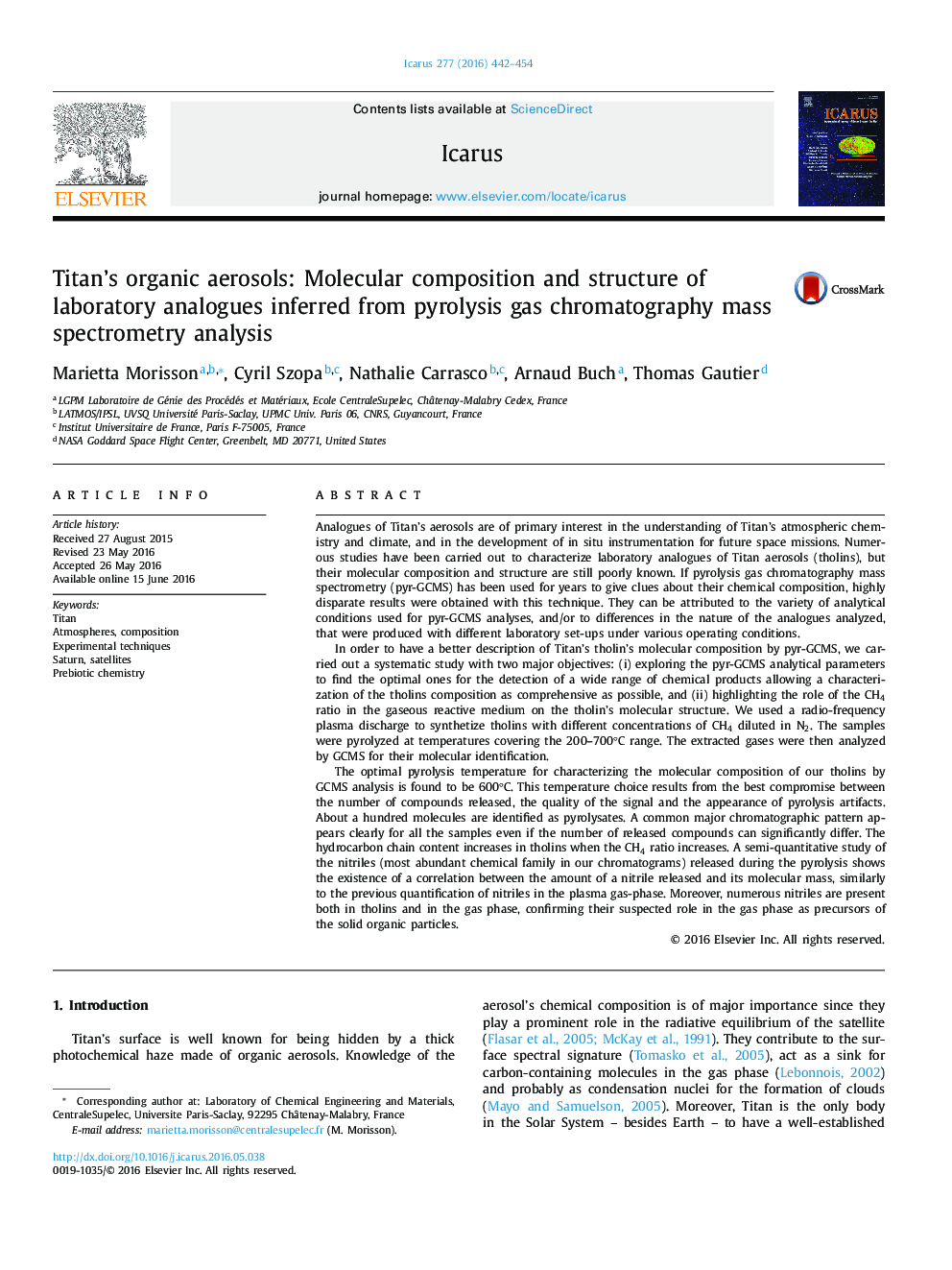| Article ID | Journal | Published Year | Pages | File Type |
|---|---|---|---|---|
| 8135021 | Icarus | 2016 | 13 Pages |
Abstract
The optimal pyrolysis temperature for characterizing the molecular composition of our tholins by GCMS analysis is found to be 600°C. This temperature choice results from the best compromise between the number of compounds released, the quality of the signal and the appearance of pyrolysis artifacts. About a hundred molecules are identified as pyrolysates. A common major chromatographic pattern appears clearly for all the samples even if the number of released compounds can significantly differ. The hydrocarbon chain content increases in tholins when the CH4 ratio increases. A semi-quantitative study of the nitriles (most abundant chemical family in our chromatograms) released during the pyrolysis shows the existence of a correlation between the amount of a nitrile released and its molecular mass, similarly to the previous quantification of nitriles in the plasma gas-phase. Moreover, numerous nitriles are present both in tholins and in the gas phase, confirming their suspected role in the gas phase as precursors of the solid organic particles.
Related Topics
Physical Sciences and Engineering
Earth and Planetary Sciences
Space and Planetary Science
Authors
Marietta Morisson, Cyril Szopa, Nathalie Carrasco, Arnaud Buch, Thomas Gautier,
